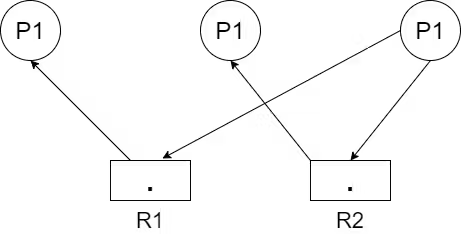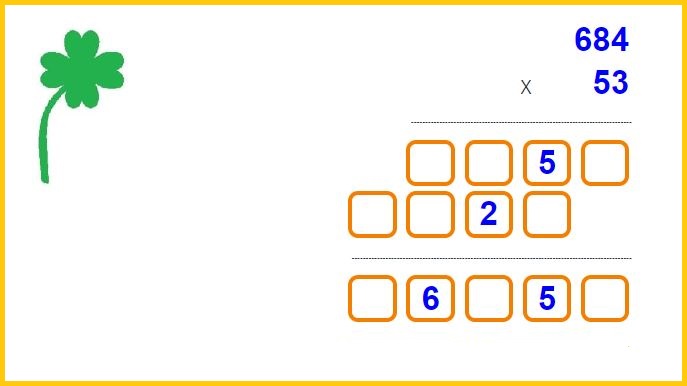
A resource allocation graph provides valuable information about the state of a system in terms of processes and resources. It allows us to understand the number of available resources, the allocation status of each resource, and the resource requests made by individual processes. The diagram represents all these aspects visually, making it easier to grasp the overall system state.
One of the advantages of using a graph is that it can sometimes reveal deadlocks directly, which may not be immediately evident from a table representation. However, when dealing with systems that involve a large number of processes and resources, tables can be more effective. Graphs, on the other hand, are preferable for systems with fewer processes and resources. It’s important to note that any graph consists of vertices (representing processes or resources) and edges (representing relationships or dependencies between them).
What is Resource Allocation:
Resource allocation graphs can be particularly valuable in project management, manufacturing, logistics, and other domains where effective resource allocation and utilization are critical. They allow stakeholders to visualize resource patterns, make informed decisions, and optimize resource allocation strategies to maximize productivity and meet project or organizational goals.

A resource allocation graph is a useful and straightforward tool for depicting the interactions between processes and resources in a system, particularly in identifying potential deadlocks. It provides information about which processes hold specific resources and which processes are waiting for resources.
The graph represents the system’s state by showing the allocation and request of resources for each process. It offers a visual representation that can make it easier to understand the system’s condition, including the number of allocated resources and the resource requests of each process. Graphs are particularly beneficial when the system involves a smaller number of processes and resources, as they can provide a clear overview. However, tables might be more suitable for systems with a large number of processes and resources.
About Resource Graphs
Resource graphs, also known as resource allocation graphs or resource utilization graphs, are visual representations that depict the allocation and utilization of resources over time. They are useful tools for understanding and analyzing how resources are allocated, shared, and utilized within a system or project.
In a resource graph, the x-axis typically represents time, while the y-axis represents the quantity or availability of the resource being analyzed. The graph may consist of multiple lines or bars, each representing a different resource or resource category.
Here are a few common types of resource graphs:
- Resource Allocation Graph: This type of graph illustrates how resources are allocated to different tasks or projects over time. It shows which resources are assigned to specific activities, allowing stakeholders to identify potential bottlenecks or imbalances in resource allocation.
- Resource Utilization Graph: This graph provides insights into how resources are utilized or consumed over time. It shows the usage levels or workload of resources, highlighting periods of high or low utilization. This information can help optimize resource allocation and identify opportunities for efficiency improvements.
- Resource Availability Graph: This graph depicts the availability or supply of resources over time. It shows the quantity of resources that are available or free for allocation at any given point. This can help identify periods of resource scarcity or excess capacity, facilitating better planning and scheduling.
Resource Allocation Graph:
A resource allocation graph is a graphical representation used in computer science and operating systems to model the allocation of resources to processes. It helps in analyzing and detecting potential deadlocks in a system.
In a resource allocation graph, there are two main types of nodes:
- Process nodes: Represented by circles or rectangles, these nodes represent individual processes or tasks in the system.
- Resource nodes: Represented by squares or rectangles, these nodes represent various resources available in the system, such as printers, memory, or I/O devices.
The graph also includes edges that indicate the relationships between processes and resources. There are two types of edges:
- Request edges: Represented by arrows from a process node to a resource node, these edges indicate that a process is requesting a resource.
- Assignment edges: Represented by arrows from a resource node to a process node, these edges indicate that a resource has been allocated to a process.
A resource allocation graph can help identify potential deadlocks in a system. A deadlock occurs when processes are waiting indefinitely for resources because they are in a circular dependency. In a resource allocation graph, a deadlock can be identified by the presence of a cycle that includes both request and assignment edges.
To detect a deadlock using a resource allocation graph, you can look for the following conditions:
- Circular wait: There is a circular chain of processes, where each process is waiting for a resource that is held by another process in the chain.
- Mutual exclusion: Resources that are allocated to processes are non-sharable, meaning they cannot be used by multiple processes simultaneously.
- Hold and wait: Processes are holding resources while waiting for additional resources to be allocated to them.
- No preemption: Resources cannot be forcibly taken away from a process; they can only be released voluntarily.
If all these conditions are present in the resource allocation graph, it indicates the possibility of a deadlock in the system.
Resource allocation graphs are a visual tool that aids in understanding resource usage and potential deadlocks in complex systems. They can be used to design and analyze systems to ensure efficient resource allocation and avoid deadlock situations.
The concept of a Resource Allocation Graph (RAG)
Let’s explore the concept of a Resource Allocation Graph (RAG) in the context of operating systems. A Resource Allocation Graph is a powerful tool that helps us understand the state of a system in terms of processes and resources. Here are the key components and features of RAG:
- Vertices:
- Process Vertex: Each process is represented as a circle (vertex) in the graph.
- Resource Vertex:
- Single Instance Type Resource: Represented as a box with a single dot inside. The number of dots indicates how many instances of that resource type are available.
- Multi-Resource Instance Type Resource: Also represented as a box, but with multiple dots inside, indicating the availability of several instances of that resource type.
- Edges:
- Assign Edge:
- Represents an already assigned resource to a process.
- Indicates that the process is currently using that resource.
- Request Edge:
- Represents a future request by a process for a resource.
- Indicates that the process may need that resource to complete its execution.
- Assign Edge:
- Purpose and Use:
- Deadlock Detection: RAGs help us visualize how processes interact with resources. By analyzing the graph, we can identify potential deadlocks.
- System State Representation: Instead of using tables, RAGs provide a straightforward way to represent the system’s condition in terms of processes and resources.
- Graph vs. Table:
- Graphs are beneficial when the system has fewer processes and resources.
- Tables are more suitable for systems with a large number of processes and resources.
- Example:
- Consider a system with three processes (P1, P2, P3) and two resources (R1, R2).
- P1 holds R1, P2 holds R2, and P3 requests R1.
- The RAG would show:
- Assign edges from R1 to P1 and R2 to P2.
- A request edge from P3 to R1.
- Deadlock Detection:
- If the graph contains a cycle involving only request edges, it indicates a potential deadlock.
- For example, if P1 requests R2 (forming a cycle), deadlock might occur.
Remember, RAGs provide a visual representation of how processes and resources interact, making them a valuable tool for understanding system dynamics and detecting potential deadlocks
Resource Allocation Graph and Wait for Graph Algorithm

To convert a Resource Allocation graph into a Wait-for graph, an algorithmic approach can be followed. The steps involve removing the resource nodes from the graph, leaving only the processes as vertices. The edges in the Wait-for graph represent dependencies or requests between processes. If the resulting Wait-for graph contains a cycle, it indicates a deadlock state in the system, implying that processes are waiting indefinitely for resources that are held by other processes in the cycle.
- A Resource Allocation graph consists of both processes and resources.
- A Wait-for graph is derived from the Resource Allocation graph by removing the resource nodes, leaving only the processes as vertices.
- In the Wait-for graph, dependencies or requests between processes are represented by edges.
- If the Wait-for graph contains a cycle, it indicates a deadlock state where processes are waiting indefinitely for resources held by other processes in the cycle.
The key distinction between a Resource Allocation Graph (RAG) and a wait-for graph lies in the number of vertices they each have. A RAG includes two vertices: one for resources and the other for processes. In contrast, a wait-for graph only has one vertex, representing processes. Importantly, a wait-for graph does not form cycles, which means it does not contribute to the occurrence of deadlocks in the system.
Resource Allocation Graph in Operating System

Let’s explore resource allocation in operating systems. Resource management is a critical aspect of operating systems, ensuring that available resources are efficiently distributed among various processes. Here are the key concepts related to resource allocation:
- Resource Allocation:
- Definition: Resource allocation refers to the process of assigning available resources (such as CPU time, memory, disk space, and network bandwidth) to processes within the operating system.
- Dynamic vs. Static Allocation:
- Dynamic Allocation: Resources are assigned based on the current needs of processes. This allocation can change dynamically as processes request or release resources.
- Static Allocation: Resources are allocated in advance, and processes receive fixed shares. Static allocation is less flexible but can prevent resource contention.
- Importance: Efficient resource allocation ensures that processes execute without problems like deadlocks.
- Terminology:
- Resource: Anything that can be assigned dynamically or statically in the operating system. Examples include CPU time, memory, disk space, and network bandwidth.
- Process: Any program or application being executed in the operating system, with its own memory space, execution state, and set of system resources.
- Scheduling: Determines which process should be allocated a particular resource at a given time.
- Deadlock: Occurs when processes wait for resources that are busy elsewhere, leading to a situation where neither resources are freed nor processes can proceed.
- Semaphore: An integer variable used for synchronization to prevent race conditions.
- Mutual Exclusion: Technique to prevent multiple processes from accessing the same resources simultaneously.
- Memory Management: Manages operations between main memory and disk during process execution.
- Features of Resource Management:
- Resource Scheduling:
- The OS allocates available resources to processes, deciding the sequence for CPU, memory, and other resource access.
- Resource Monitoring:
- The OS tracks resource usage by processes and takes action if excessive resource consumption leads to deadlocks.
- Resource Protection:
- Protects the system from unauthorized access by users or other processes.
- Resource Sharing:
- Allows multiple processes to share common resources fairly and efficiently.
- Resource Scheduling:
- Resource Allocation Graph (RAG):
- A graphical representation used to model and analyze resource allocation and potential deadlocks.
- Shows which resources are held by which processes and which processes are waiting for specific resources.
- Helps visualize system dynamics and identify potential deadlocks.
In summary, resource allocation ensures that processes receive the necessary resources for execution, balancing efficiency and fairness. The Resource Allocation Graph (RAG) provides a powerful visual tool for understanding resource interactions and detecting potential deadlocks. 📊🔍
Resource Allocation Graph Generator
Let’s explore the concept of a Resource Allocation Graph (RAG) in the context of operating systems. A Resource Allocation Graph is a powerful tool that helps us understand the state of a system in terms of processes and resources. Here are the key components and features of RAG:
- Vertices:
- Process Vertex: Each process is represented as a circle (vertex) in the graph.
- Resource Vertex:
- Single Instance Type Resource: Represented as a box with a single dot inside. The number of dots indicates how many instances of that resource type are available.
- Multi-Resource Instance Type Resource: Also represented as a box, but with multiple dots inside, indicating the availability of several instances of that resource type.
- Edges:
- Assign Edge:
- Represents an already assigned resource to a process.
- Indicates that the process is currently using that resource.
- Request Edge:
- Represents a future request by a process for a resource.
- Indicates that the process may need that resource to complete its execution.
- Assign Edge:
- Purpose and Use:
- Deadlock Detection: RAGs help us visualize how processes interact with resources. By analyzing the graph, we can identify potential deadlocks.
- System State Representation: Instead of using tables, RAGs provide a straightforward way to represent the system’s condition in terms of processes and resources.
- Graph vs. Table:
- Graphs are beneficial when the system has fewer processes and resources.
- Tables are more suitable for systems with a large number of processes and resources.
- Example:
- Consider a system with three processes (P1, P2, P3) and two resources (R1, R2).
- P1 holds R1, P2 holds R2, and P3 requests R1.
- The RAG would show:
- Assign edges from R1 to P1 and R2 to P2.
- A request edge from P3 to R1.
- Deadlock Detection:
- If the graph contains a cycle involving only request edges, it indicates a potential deadlock.
- For example, if P1 requests R2 (forming a cycle), deadlock might occur.
Remember, RAGs provide a visual representation of how processes and resources interact, making them a valuable tool for understanding system dynamics and detecting potential deadlocks. 📊🔍
If you’re interested in creating your RAG, there are various tools available online. Here are a few options:
- GeeksforGeeks: GeeksforGeeks provides an article on RAGs in operating systems, explaining their significance and components. You can also find examples and details on how to create one.
- Creately: Creately offers an easy-to-use online diagram editor where you can create and edit resource allocation graphs. Collaborate with others and export your results in multiple image formats.
- Taskade: Taskade provides an AI Resource Allocation Flowchart Generator, simplifying the process of managing resources. It gives a bird’s-eye view of resource allocation procedures and roles within your organization.
- JavaScript Resource Allocation Graph: If you’re comfortable with coding, CodePal offers a JavaScript function to construct and maintain a resource allocation graph. It also supports the Banker’s Algorithm and Safety Algorithm.
Resource Allocation Graph Deadlock
A claim edge in a resource-allocation graph indicates that a process is requesting or claiming a particular resource. It represents the dependency of a process on a resource that it requires to complete its execution. The claim edge connects the process node to the resource node that the process is requesting.
A deadlock in a resource allocation graph occurs when there is a cycle involving both processes and resources, resulting in a state where no progress can be made. Specifically, a deadlock occurs when all processes in the cycle are waiting for resources that are held by other processes in the cycle.
In a resource allocation graph, a deadlock can be identified by the presence of a cycle in the graph. This cycle represents a circular dependency of processes waiting for resources that are currently held by other processes. If a cycle exists in the graph, it indicates that no process in the cycle can proceed unless it receives additional resources, which are being held by other processes that are also waiting.
Deadlocks can be problematic because they can cause a system to become unresponsive or enter a state of indefinite waiting, leading to a halt in progress. Resolving deadlocks often involves techniques such as resource allocation algorithms, process termination, or resource preemption to break the circular dependencies and allow the system to recover and resume normal operation.




